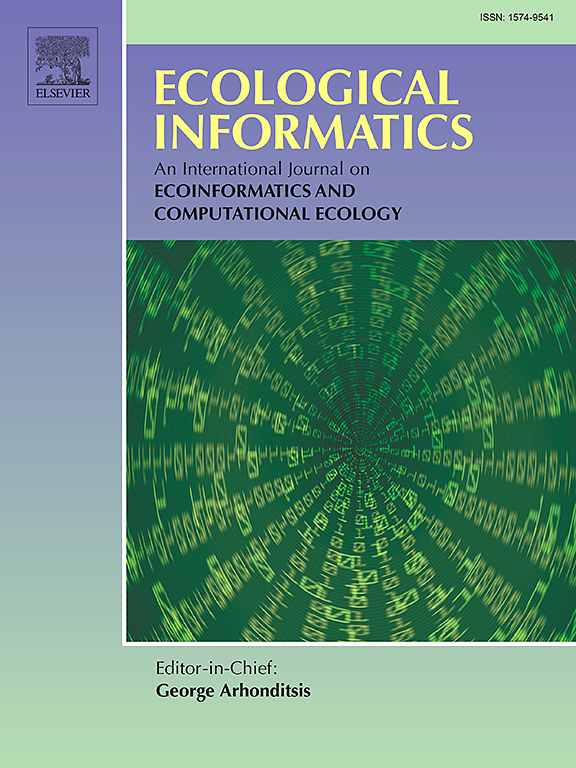Machine learning approach for water quality predictions based on multispectral satellite imageries
IF 5.8
2区 环境科学与生态学
Q1 ECOLOGY
引用次数: 0
Abstract
Water quality analysis is a vital component of the water resources management and has to be undertaken promptly to make sure environmental regulations are being followed and to eliminate any pollution that could harm the ecosystem. The main objective of this study to retrieve and map the water quality parameters from Sentinel-2 and ResourceSat-2 [Linear Imaging Self-Scanning Sensor (LISS)–IV] multi-spectral satellite data, using Support Vector Machines (SVM), Random Forests (RF), and Multi-Linear regression (MLR) models. This study represents the first attempt to demonstrate the applicability and performance of high-spatial resolution ResourceSat-2 remote sensing satellite's LISS-4 sensor, which operates in three spectral bands in the Visible and Near Infrared Region (VNIR), to predict water quality. Spectral bands of each satellite were used as independent parameter to generate the algorithms for pH, Dissolved Oxygen (DO), Total Suspended Solids (TSS) and Total Dissolved Solids (TDS). The model performance was evaluated based on coefficient of determination (R2), Mean Absolute Error (MAE), Mean Absolute Percentage Error (MAPE), and the Root Mean Square Error (RMSE) statistical indices. The result of this study indicates that the SVM yielded the highest accuracy followed by the RF and MLR. The R2, MAE, MAPE and RMSE ranged between 0.78 and 0.99, 0.049–0.24, 0.01–10.9 % and 0.05–0.28 respectively for all the four SVM models across both the sensors. Based on the spatial trend Sentinel-2 was found to be slightly superior to the ResourceSat-2 (LISS-IV) for the estimation of water quality parameters owing to its superior spectral and radiometric resolution, nevertheless ResourceSat-2 (LISS-IV) has its own advantage in terms of high spatial resolution. The results of this study highlight the high potential of machine learning models in conjunction with multispectral satellite images to manage water quality.
基于多光谱卫星图像的水质预测机器学习方法
水质分析是水资源管理的重要组成部分,必须及时进行,以确保环境法规得到遵守,并消除可能损害生态系统的任何污染。本研究的主要目的是利用支持向量机(SVM)、随机森林(RF)和多线性回归(MLR)模型,从哨兵-2 和资源卫星-2 [线性成像自扫描传感器(LISS)-IV] 多光谱卫星数据中检索和绘制水质参数图。本研究首次尝试展示高空间分辨率资源卫星 2 号遥感卫星的 LISS-4 传感器在预测水质方面的适用性和性能,该传感器在可见光和近红外区域(VNIR)的三个光谱波段上运行。每颗卫星的光谱波段都被用作独立参数,用于生成 pH 值、溶解氧 (DO)、总悬浮固体 (TSS) 和总溶解固体 (TDS) 的算法。根据判定系数 (R2)、平均绝对误差 (MAE)、平均绝对百分比误差 (MAPE) 和均方根误差 (RMSE) 等统计指标对模型性能进行了评估。研究结果表明,SVM 的准确率最高,其次是 RF 和 MLR。所有四种 SVM 模型在两种传感器上的 R2、MAE、MAPE 和 RMSE 分别为 0.78 至 0.99、0.049 至 0.24、0.01 至 10.9 % 和 0.05 至 0.28。从空间趋势来看,哨兵-2 由于其光谱和辐射分辨率较高,在水质参数估计方面略优于资源卫星-2(LISS-IV),但资源卫星-2(LISS-IV)在高空间分辨率方面也有自己的优势。这项研究的结果凸显了机器学习模型与多光谱卫星图像相结合管理水质的巨大潜力。
本文章由计算机程序翻译,如有差异,请以英文原文为准。
求助全文
约1分钟内获得全文
求助全文
来源期刊

Ecological Informatics
环境科学-生态学
CiteScore
8.30
自引率
11.80%
发文量
346
审稿时长
46 days
期刊介绍:
The journal Ecological Informatics is devoted to the publication of high quality, peer-reviewed articles on all aspects of computational ecology, data science and biogeography. The scope of the journal takes into account the data-intensive nature of ecology, the growing capacity of information technology to access, harness and leverage complex data as well as the critical need for informing sustainable management in view of global environmental and climate change.
The nature of the journal is interdisciplinary at the crossover between ecology and informatics. It focuses on novel concepts and techniques for image- and genome-based monitoring and interpretation, sensor- and multimedia-based data acquisition, internet-based data archiving and sharing, data assimilation, modelling and prediction of ecological data.
 求助内容:
求助内容: 应助结果提醒方式:
应助结果提醒方式:


